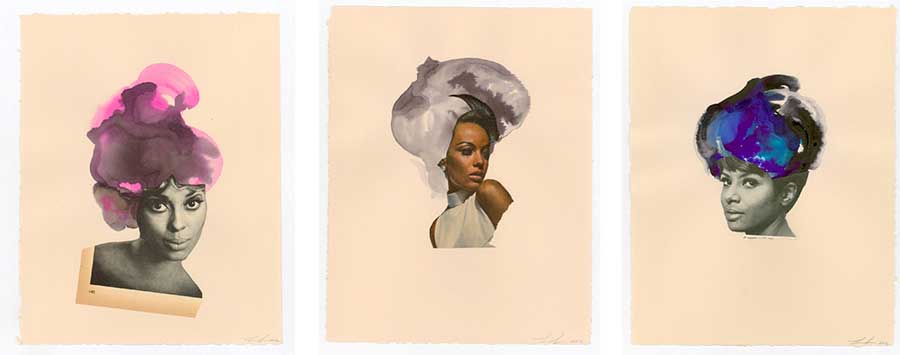Delving Into the Deutsche Bank Collection
How one executive's vision sparked a 40 year committment to contemporary art
How one executive's vision sparked a 40 year committment to contemporary art

Anyone approaching Deutsche Bank’s headquarters in Frankfurt is confronted with a powerful statement. Prominently-sited to the left of the Bank’s dual skyscrapers stands a sculpture by Swiss polymath Max Bill: a huge, 66-ton work in pink Sardinian granite, whose geometric-concrete forms evoke an intertwining, unbroken loop. Commissioned by the bank’s executive board, between 1984 and 1986 this writhing leviathan was chiselled out of a block weighing 180 tonnes by specialist masons in Carrara, Italy, under the direct supervision of then 76 year old Bill; an elaborate logistical operation then saw the piece transported to Germany and finally installed in Frankfurt. Though it dates from the earliest days of the Bank’s art collection, the level of enthusiasm and determination for engaging with art which this commission represents continues today.

Officially founded in 1980, in its 40th year - coincidentally, also the 150th anniversary of the bank’s founding in Berlin in 1870 – the Deutsche Bank Collection is easily one of the most significant corporate art collections in the world. Comprising tens of thousands of works, it owes its present state to the vision of Deutsche Bank’s executive board member, the late Herbert Zapp, who laid out in his objectives in one concise memo: ‘Our staff, customers and guests are to be offered a wilful and competent insight into the diversity of our contemporary fine art. At the same time, the artists and their gallerists, and thus the art scene as a whole, are to be supported in their work.’ Art was not a status symbol, in other words, but a way to create an aesthetically inspiring environment, for all who used and visited the workplace. This democratic approach was an almost revolutionary idea at the time. Today, when not everyone can take an inspiring workplace for granted, works from the Deutsche Bank Collection grace the walls of over 600 offices and branches worldwide.
Zapp’s intention to support ‘the art scene as a whole’ saw him focus energies on the work of contemporary German artists, extending even to the critical practices of the likes of Joseph Beuys. When I visited the Frankfurt headquarters this year, I encountered not only work by recognizable, German-speaking artists like Annette Kelm, Andreas Slominski and Matthias Weischer, but names from across the globe: Ebtisam Abdulaziz (UAE), Shirin Alibadi (Iran), Samuel Fosso (Cameroon), Yang Fudong (China), Shilpa Gupta (India), Rivane Neuenschwander (Brazil), Adrian Paci (Albania), Pavel Pepperstein (Russia) and Kara Walker (USA).

‘In recent years the collection has become very international’, explains Britta Färber, Chief Curator of the Collection, who detailed the collection’s scope now includes 2,700 artists from more than 40 countries including those in Africa, Asia and South America. In part, this reflects the rapid internationalization of the bank’s expanded activities, especially in the post-Berlin Wall 1990s; but when the team around Friedhelm Hütte, longstanding Global Head of Art launched a new concept for the hang in Frankfurt in 2010, he spoke deliberately of a showcase for: ‘international, predominantly young artists who deal with pressing issues of our time, formal experiments that provoke, touch and foster dialog across cultural and historical divides’.
Referring to Andre Malraux’s concept, Hütte explained that the collection ‘cannot be understood as a closed, homogenous construct; instead it resembles an imaginary museum’. ‘Not as an inventory’, that means, ‘but as a multi-perspectival, wholly present art experience’. This extends to the banks’ support for the Frieze Art Fairs in London, Los Angeles and New York; in Berlin, Deutsche Bank runs an exhibition venue and cultural centre of its own, the Palais Populaire, making the Collection accessible to an even broader public. Since it opened in 2018, it has hosted surveys of drawing, British sculpture lent from the Tate and, most recently, a retrospective of Christo and Jeanne-Claude and ‘Time Present’, a show of photography from the Collection. These two exhibitions will be showcased on the Deutsche Bank Collection Viewing Room during the online edition of Frieze New York on Frieze Viewing Room, alongside a focus on past recipient of the bank’s ‘Artist of the Year’ award for emerging artists.

Still, a scintillating, globally scattered ‘musée imaginaire’ ultimately requires rooms: physical space to hang works so they can be enjoyed day to day, as Zapp imagined. Works from the Collection are sold ‘in individual cases’, says the bank’s spokesman Klaus Winker: if there is no longer the office space to hang them, or if they – like oil paintings or duplicate prints – no longer ‘fit into the collection’s main focus’. Färber stresses above all the idea of a ‘breathing collection’. Indeed, in recent years, the bank has also sold paintings by, among others, Hans Hartung, Piet Mondrian and Emil Nolde while continuing to acquire works by the likes of Camille Henrot, Lorna Simpson and Haegue Yang.

Even before the COVID-19 pandemic, it is no secret that the international banking sector is facing challenges and Deutsche Bank is undergoing a period of change. Nonetheless, the banks’ commitment to collecting and funding art remains. Which is why Max Bill’s monumental sculpture in at the Frankfurt headquarters feels so topical. The title of the work is Kontinuität: 'continuity’.
A selection of artworks from the Deutsche Bank collection were featured on the Frieze New York 2020 Viewing Room.




















